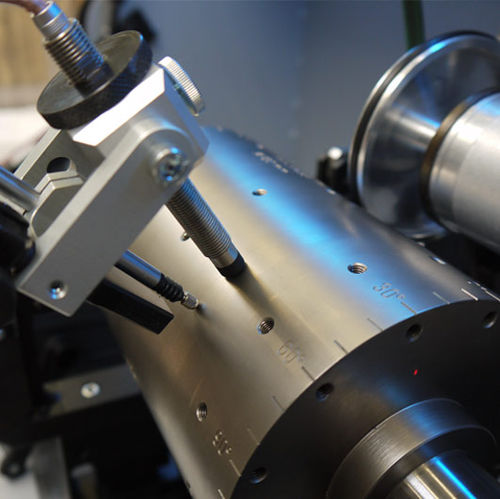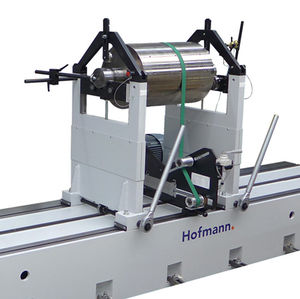
Eddy current tester RO 7000avionicsaeronauticalportable
Add to favorites
Compare this product
Characteristics
- Domain
- eddy current
- Applications
- avionics
- Other characteristics
- aeronautical, portable
Description
Runout quantifies a shaft radial or axial difference between ideal and actual surfaces or lengths. Runout will be checked during manufacturing or repair of a rotating shaft. Hofmann’s Portable Runout Inspection System RO 7000 provides a solution to measure radial and axial runout of rotors and other cylindrical parts in multiple axial planes. During a measurement, a rotor will be supported for example in a lathe, in V-blocks or on rollers. Rotors may be rotated by a motorized drive or manually. The system consists of a measuring controller to be hooked-up to a PC, a sensor set and the measuring software Orbistar.
The Software makes the difference
Orbistar helps to setup a specific measuring task, acquires and displays the measuring data, provides tools for data analysis and generates complete reports. At the same time the software compensates for the common influence of the shaft axis movement on the measurement. Therefore, special data evaluation algorithms and the use of reference sensors are key. This yields results which are comparable across different measuring devices.
Runout will be measured using proximity sensors which are supplied with brackets that interface to standard magnetic bases. The angular position will be captured with an encoder wheel, which is driven by the rotor surface, or using a speed sensor.
Electrical runout measurement included
A special feature of the RO 7000 is its capability to measure electrical runout simultaneously with a tactile (mechanical runout) and an eddy current senor (total runout). The electrical runout is the difference between the total and the mechanical runout, i.e.
VIDEO
Catalogs
Related Searches
*Prices are pre-tax. They exclude delivery charges and customs duties and do not include additional charges for installation or activation options. Prices are indicative only and may vary by country, with changes to the cost of raw materials and exchange rates.












